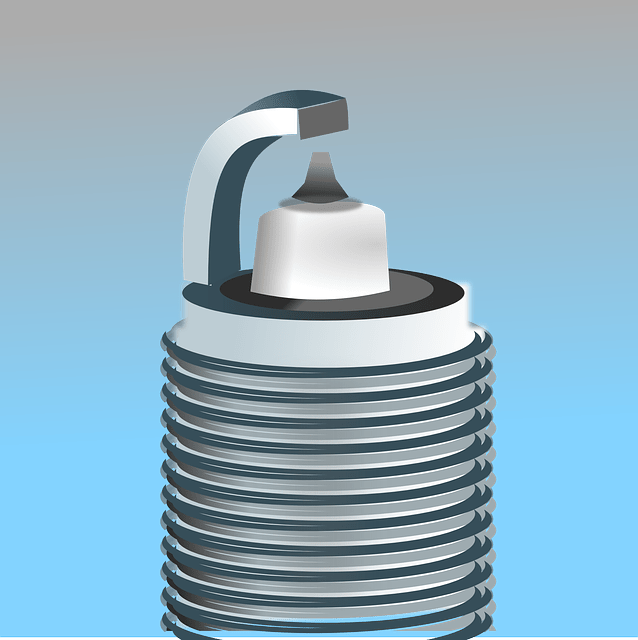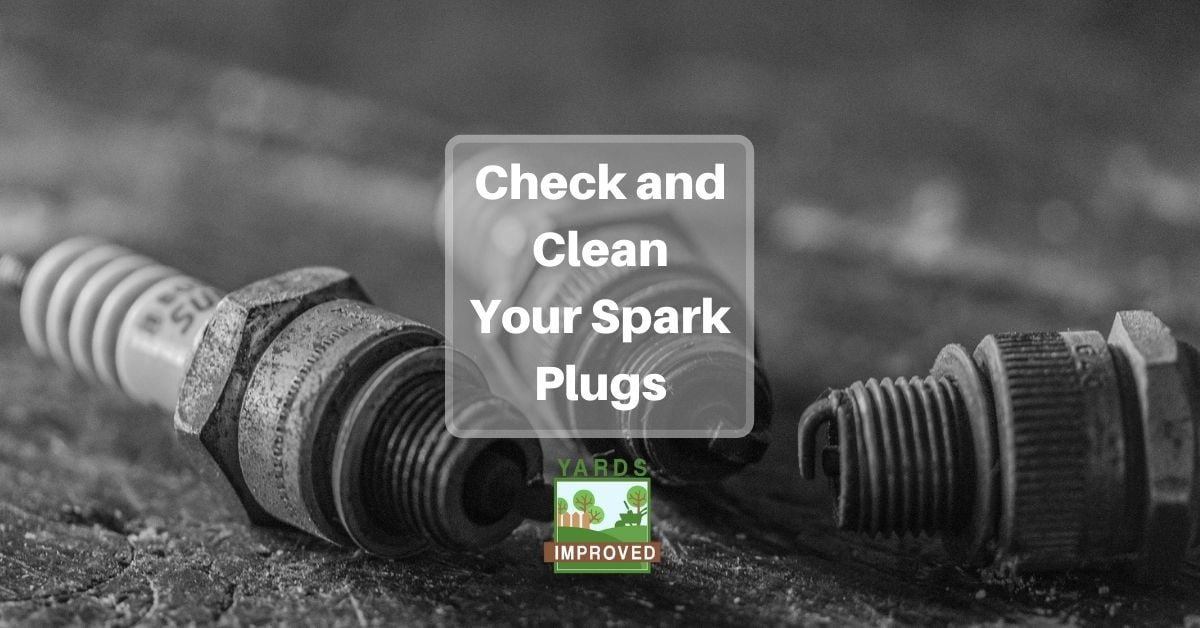Ever plan a day of yard work but can’t get your power tool started? It’s incredibly frustrating and can lead to lots of lost time. It can mean you lose time while trying to diagnose the issue. You might even need to make an extra trip to the store for parts
Some problems, though, boil down to a bad spark plug. And really, it’s not even bad. It might just need some cleaning up.
If you’re not familiar with checking your spark plugs, you’re in luck! We’ll look at diagnosing spark plug issues, deciding whether you need a new one or not, and how to get it working correctly.
What Does A Spark Plug Do?

If your power tools run on gas, you need something to get that gas burning. A small spark can do that, and that is exactly what you get out of a working spark plug.
At one end of the spark plug, you’ll see two leads that are close together but don’t touch. However, they are close enough that an electric spark can jump across, and that’s the first step to starting your tool. No spark? No start! But this small, inexpensive part is necessary to get your grass cut, hedges trimmed, or dead trees felled. At least, that is, if you’re using a gas-powered tool
How Often To Check Your Spark Plugs
Spark plugs can last a long time under optimal conditions. And since you probably don’t use your power tools as often as your car, for instance, you might never have to replace them. They could easily outlive the rest of the tool!
However, it’s still good to check on them. We recommend that you look over at the beginning of the season. If it’s a tool you’ll use over summer, check on them as part of routine maintenance in spring. Likewise, for snowplows and other winter tools, look them over when the season draws near.
Symptoms of A Bad Spark Plug
So what exactly is it that you should look for? Here are some signs your spark plug might need cleaning or replacement:
Cracked porcelain. If the porcelain “body” of the plug is bad, it’s time to get a new one. It might work a bit, but it’s losing its efficiency.
The engine doesn’t try to start. If you pull the cord or hit the starter but nothing happens, the spark plug could be the culprit. On the other hand, if the engine does try to turn over, the issue is likely elsewhere.
The engine sputters or misfires. At times, the spark plugs have to spark again to keep the fuel burning. But if it doesn’t spark well, your engine could have trouble running smoothly.
Worsening fuel efficiency. Are you using more fuel to get the job done? It could be that the spark plug isn’t providing enough spark.
“Dirty” leads. A lot of things can foul the leads on a spark plug. Carbon can build up as fuel burns. Corrosion can also occur. The plugs could get covered in oil, dust, tree sap, or other “gunk” that builds up as you use them. Usually, this can be cleaned, but new plugs aren’t too expensive if you’d rather not go through the trouble.
Cleaning Your Spark Plug

When you get right down to it, spark plugs are pretty inexpensive. For just $4 or $5, you can get a new one. Even a “high end” spark plug is under $10. So you might not want to go to the bother of “fixing” one.
However, if you do want to try to get some more life out of your current spark plug, you can try these steps.
Before pulling your spark plug out, though, clean the area around it. This will help keep dirt, grass, or water from dropping into the socket. Wipe it off. Compressed air can help, too.
Disconnect the lead.
Use sandpaper on the leads if they’re corroded. High-grit sandpaper will do the trick (around 220 grit is ideal). If that isn’t enough, it’s best to replace your spark plug. If you can’t, though, you can use a file to grind the leads a bit more. But replace your plug ASAP!
Before reinserting your plug into its socket, it’s good to clean the threads, too. Use a wire brush for this. Always brush with the grain of the threads.
Spray the leads and threads with brake cleaner. This will help get rid of any fine dust. Wipe it off with a lint-free cloth.
You should also check the gap between the leads. The user’s manual for your tool (or the website) should specify what the gap should be. Checking the gap requires a special tool. The tool itself can help you move the leads as needed. The correct gap will help generate a spark that will get your fuel going.
Once the plug is clean and gapped correctly, screw it back in and attach the lead.
Conclusion
You’ll need to keep the spark going in your relationship with your gas power tools. If the spark plug dies, you won’t be able to get started. Fortunately, they last a long time. If you do have problems with them, you can try cleaning them. And if that doesn’t work, at least they aren’t too expensive to replace.









